Sat Mag
Antarabhava and Rebirth

By Dr Upul
Wijayawardhana
“As far as I am concerned, there is more than enough wisdom in Buddhism, even if I put the rebirth hypothesis on hold.” This was one of the personal comments received following my article “Is there an Antarabhava: Missing link in rebirth?” (The Island, 26 May) and was from a theoretical physicist with a special interest in quantum theory. Naturally, he is seeking a mechanistic explanation for the process of rebirth and before coming to this conclusion, he argued the case as follows:
“Assume that there is some mental structure which contains memory and life information in its structural features. We don’t know what it is made of. It is obviously not hard matter. Let us say it is some form of energy – e.g., electromagnetic energy – but it could be some unknown form of energy- some type of ‘dark energy’. That is, the mental structure which is assumed to persist after death of an individual is not a random structure (maximum entropy), but has features corresponding to information (information means decrease of entropy) about the person who ‘died’. Now, all things that physics has observed in the universe, be it black holes, matter, dark matter, stars, radiation, electromagnetic waves, gravitational energy, etc., all obey the second law of thermodynamics. Accordingly, order spontaneously changes into disorder: Hot bodies spontaneously cool, bringing everything to a common low temperature: Pure phases become mixed and ‘dirty’: Smooth flowing rivers develop eddies and turbulence: Even a rock inscription undergoes weathering and erosion: Information becomes disinformation, etc.”
“You can keep things ordered, or retain information safely by constantly renewing them, etc., but all this costs energy. A living being strives to maintain a persisting cellular and neural structure during its lifetime and the organism does this by using the energy supplied by the food to rebuild the cells and neurons that normal decay. But even this has a limit. Death occurs when the decay processes exceed the rapidity of the rebuilding processes (the balance between anabolic and catabolic processes is lost). After that, let us say this “persisting mental structure” escapes the body and becomes the “antarabhava” object but the information encoded in the “antarabhava” structure will begin to rapidly become disordered due to the 2nd law of thermodynamics. The longer it has to stay (e.g., years), the more decayed and disorganized it becomes. This also happens to a computer memory if the memory chips (magnetic records) are left alone, and not re-energized each time you start up your computer. As I see no source of energy to maintain this “antarabhava” structure, I expect it to decay as fast, or even faster than the more solid neural structures of the brain that would have decayed once the oxygen and ATP stop arriving into the brain.”
With my limited knowledge of physics, last acquired over six decades ago, I cannot argue with a retired professor of theoretical physics who now functions as a principal research scientist in the National Science Research Council of Canada. In any case, he is in very good company as even some learned members of the Sangha too cast doubts on the concept of rebirth. One of them is Ajahn Sumedho, former US Navy Medic who served in the Korean War, one of the senior Western representatives of the Thai forest tradition of Theravada Buddhism and was the Abbot of Amaravati Buddhist Monastery, UK, from its consecration in 1984 until his retirement in 2010. In Ajahn Sumedho’s book ‘The Sound of Silence’ there is a chapter named, “Questions About Awareness and Rebirth” wherein he states:
“Rebirth,” like “reincarnation,” is a term that’s used generally referring to having gone through a series of different lives, and then there are various views about whether once you get reincarnated into human form where you can go, become a frog again or something like that. But the truth of the matter is, nobody really knows. The historical Buddha refers to previous lives in the scriptures and things like this, but for me these things are speculative.”
Unfortunately, I am not in touch with Ajahn Sumedho to get personal verification but, very fortunately, am in regular touch with Bhante Dhammika of Australia, who makes excellent contributions to this publication. Responding to my humble request for his comments on my article, he sent links to two posts on his blog which are well worth reading. However, most interesting was this reply of his, to a comment on the post on rebirth: “You will notice that very little on my blog is given to rebirth, pretty much because, like you, it is not a subject that particularly interests me.” This too confirms what I stated in my article that rebirth is of less importance to Buddhists by conviction than to Buddhists by birth, who tend to frown upon anyone even questioning the concept of rebirth.
These are some of the interesting comments on rebirth in Bhante Dhammika’s post (http://sdhammika.blogspot.com/2013/03/the-buddha-on-rebirth.html):
“The first Buddhists regarded life (jiva) as a process of consciousness moving through a succession of bodies, death being only a momentary event to this process. This phenomenon is sometimes called `moving from womb to womb’ (Sn.278) or more precisely, rebirth (punabbhava, D.II,15). Later Buddhist thinkers explained rebirth in complex and minute detail – death-proximate kamma (marana samma kamma), last though moment (cuti citta), relinking (patisandhi), the underlying stream of existence (bhavanga sota), etc. Interestingly, none of this is mentioned in the Sutta Pitaka, much of it is not even to be found in the Abhidhamma Pitaka. It is the product of speculation dating from the early centuries CE onward. This is not to say that such concepts are valueless, but it is important to distinguish between early, late and very late Dhamma concepts. Buddha mentions rebirth often enough but what does he say about the actual process of rebirth? The answer is `Not very much’.”
“Some Buddhist schools teach that after death, consciousness hovers in an in-between state (antarabhava) for a certain period before being reborn. Others, such as the Theravadins, assert that rebirth takes place within moments of consciousness disengaging from the body. The Buddha suggests that there is an interval between death and rebirth and spoke of the situation `when one has laid down the body (i.e., died) but has not yet been reborn’ (S.IV,400). On several other occasions He said that for one who has attained Nirvana there is `no here, no there, no in-between'(S.IV,73), presumably referring to this life, the next life, and the in-between state. When the consciousness is in transition between one life and the next it is referred to as gandhabba, and the Buddha said that this gandhabba has to be present for conception to take place (M.I,265)”
“In traditional Buddhist countries but particularly in Sri Lanka, young children occasionally come to public attention after claiming that they can remember their former life. Some of these claims have been carefully studied by Prof. Ian Stevenson of the University of Virginia. His researches have been published by the university as Cases of the Reincarnation Type, Vol.I,1975; Vol.II,1978; Vol.III, 1980 and Vol.IV,1983. While not being easy to read, Stevenson’s research has a high degree of scientific credibility and objectivity. According to the Buddha, just before the attainment of enlightenment some individuals have an experience called the knowledge of former lives (pubbe nivasanussati, D.I,81). During this experience, vivid and detailed memories of one’s former lives flash through the mind.”
Bhante Dhammika’s comments on the last thought and rebirth are very interesting (http://sdhammika.blogspot.com/2013/04/last-thought-moment.html):
“While the Buddha understood the mind to be a ‘flow’ or ‘stream’ of mental events (vinnanasota), later Abhidhamma thinkers speculated that it was actually a string of individual thought moments (cittavithi) arising and passing away at great rapidity. Later still, the theory developed that the last thought moment (cuticitta) a person has before they die will determine their next life. This idea, a part of Theravada orthodoxy, seems to be an unjustified development of the Buddha’s teachings and at odds with his idea of kamma and the efficacy of morality. The Tipitaka records many occasions where the Buddha counselled people who were either dying or critically ill. If the last thought is really crucial to one’s destiny one would expect such occasions to be the most appropriate time for Him to mention it, and yet there is no record of Him ever having done so. Nor did He mention it anywhere else. Mahanama once confided to the Buddha his anxiety about dying at a time when his mind was distressed and confused, thinking it might result in him having a bad rebirth. The Buddha reassured him that because he had for a longtime developed faith, virtue, learning, renunciation and wisdom, he had nothing to fear if such a thing should happen (S.V,369).”
Perhaps, some of these responses justify this question I raised in concluding that article: “By denying the concept of Antarabhava, has Theravada Buddhism unnecessarily disregarded a vital link that may explain rebirth?”
My good friend Dr Upali Abeysiri, who nearly missed donning the sacred robes in his youth, continued the study of Dhamma in addition to becoming a very successful Plastic Surgeon, practicing in Sri Lanka and the UK. The publication of his book on Abhidhamma, simplifying the complex concepts, is delayed due to the pandemic. He has already translated Asvaghoa’s Buddhacharita, the epic poem detailing the life of Gautama Buddha composed in the early second century CE, which was published by the Buddhist Cultural Centre. He is an unwavering believer in rebirth and posed this question in support:
“Some of us also have natural abilities not inherited. I can write Sinhala poetry as soon as I want. No one in my family has written poetry. Words come to me very easily to rhyme. I translated Asvaghosa’s Buddhacharita into Sinhala poetry of over thousand stanzas. How did I get the ability? I only studied Sinhala to GCE O levels. Can you explain?”
He also referred to the recent case, shown in YouTube, of a six-year boy in a village named Naiwala who could talk fluently in English and Hindi, in addition to Sinhala, and remembered his past as a pilot in the Indian air force who crashed in a desert area. His parents are not well educated, father being a motor mechanic and the mother a housewife. Upali told me to apply Ockham’s razor and that I would come with rebirth. I checked on Ockham’s razor and found it to be a principle from philosophy enunciated by William of Ockham, a 14th century Franciscan Friar, which goes as follows: Suppose an event has two possible explanations, the explanation that requires the fewest assumptions is usually correct. Another way of saying it is that the more assumptions you have to make, the more unlikely the explanation is. It is said that Occam’s razor applies especially in the philosophy of science but is also true in everyday life.
He is quite correct that there are many things in life which defy explanation and rebirth may be one possible explanation. Talent: is it God given? Inherited? Result of experience in past lives? A lot to think about!
Upali Abeysiri too supports my contention that Theravada has lost out by disregarding the intermediate state, antarabhava, after death. He feels this was done to prevent misinterpreting antarbhavaya as Athma, soul. Some of his arguments are:
Virginia University team has, by analysis of incidents of genuine near-death experiences, has shown the mind can survive for a short period out of the body and non-functioning sensory organs, hearing, seeing etc. Theravada cannot explain this phenomenon but intermediate state of Yogavacara Abhdhamma (common to all sects of Mahayana) can explain this. The intermediate state may exist for at least seven days, maintained by clinging to existence and also nutrients obtained from smell and may even come back anytime to the original body, if the life faculty is maintained.
During the third Sangayana, the Theravadins tried to edit antarabhavaya out by maintaining there is no gap between last consciousness of present life and the first of next life. Kathavatthu book of Tripitaka was written for it and other topics. However, they did not edit the Tripitaka to erase traces of antarabhavaya but added commentaries to justify. These are some that remain:
1 Mahathanhakkhaya sutta in Majjima nikaya: Buddha says, ”Bhikkhus, three conditions are essential for a pregnancy. Union of mother (ovum) and father(sperm) and the presence of a gandhabba” The commentary gives the meaning gandabba as the death consciousness of a being who is to be reborn.
2 In the Karaniya matta sutta, ‘ bhuthava (borne) sambhavesiva (to be borne) are described as last two variety of beings to project metta. The commentary says those who have come into the egg or womb and those who are waiting to come out of the egg or womb are described thus.
3 Udana: Bahiya is told by Buddha ”Bahiya if you follow my instructions, you will not be existing in this life, next life or in between the two” (ubhaya mantharena). The commentary cannot explain it and says it is a figure of speech.
4 Abhidhamma of Tehravada explains five types of anagamins who die without attaining enlightenment are born in the fine material worlds called Suddhavasa. Here the first type is called those who attain enlightenment while in the intermediate state. Again, the commentary gives lame excuses by saying as soon as they are born attaining enlightenment.
Upali Abeysiri opines that dependent-origination (Patichcha Samuppadaya) too could be better explained with the incorporation of antarabhava and has a very plausible explanation regarding the type of cases investigated by Ian Stevenson and others:
“As to the rebirth stories, more than 80% occur following sudden deaths such as drowning or accidents. At such deaths, the last thought process does not end in 7 javana moments as in normal consciousness. The last two occur in rebirth. This is why they may still remember past life details. After six or seven years, these memories fade away as ours’ of infancy do. As their kamma was obstructed by sudden death due to another kamma, they are born as humans again, whatever the last thought was.
Whilst thanking all who made me extend my thought processes further, my search for the truth about rebirth continues!
Sat Mag
October 13 at the Women’s T20 World Cup: Injury concerns for Australia ahead of blockbuster game vs India
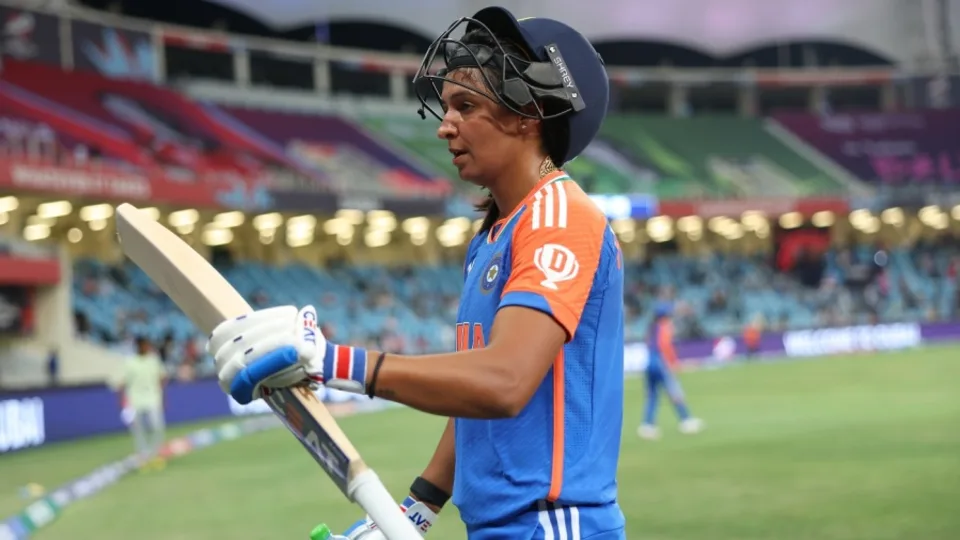
Australia vs India
Sharjah, 6pm local time
Australia have major injury concerns heading into the crucial clash. Just four balls into the match against Pakistan, Tayla Vlaeminck was out with a right shoulder dislocation. To make things worse, captain Alyssa Healy suffered an acute right foot injury while batting on 37 as she hobbled off the field with Australia needing 14 runs to win. Both players went for scans on Saturday.
India captain Harmanpreet Kaur who had hurt her neck in the match against Pakistan, turned up with a pain-relief patch on the right side of her neck during the Sri Lanka match. She also didn’t take the field during the chase. Fast bowler Pooja Vastrakar bowled full-tilt before the Sri Lanka game but didn’t play.
India will want a big win against Australia. If they win by more than 61 runs, they will move ahead of Australia, thereby automatically qualifying for the semi-final. In a case where India win by fewer than 60 runs, they will hope New Zealand win by a very small margin against Pakistan on Monday. For instance, if India make 150 against Australia and win by exactly 10 runs, New Zealand need to beat Pakistan by 28 runs defending 150 to go ahead of India’s NRR. If India lose to Australia by more than 17 runs while chasing a target of 151, then New Zealand’s NRR will be ahead of India, even if Pakistan beat New Zealand by just 1 run while defending 150.
Overall, India have won just eight out of 34 T20Is they’ve played against Australia. Two of those wins came in the group-stage games of previous T20 World Cups, in 2018 and 2020.
Australia squad:
Alyssa Healy (capt & wk), Darcie Brown, Ashleigh Gardner, Kim Garth, Grace Harris, Alana King, Phoebe Litchfield, Tahlia McGrath, Sophie Molineux, Beth Mooney, Ellyse Perry, Megan Schutt, Annabel Sutherland, Tayla Vlaeminck, Georgia Wareham
India squad:
Harmanpreet Kaur (capt), Smriti Mandhana (vice-capt), Yastika Bhatia (wk), Shafali Verma, Deepti Sharma, Jemimah Rodrigues, Richa Ghosh (wk), Pooja Vastrakar, Arundhati Reddy, Renuka Singh, D Hemalatha, Asha Sobhana, Radha Yadav, Shreyanka Patil, S Sajana
Tournament form guide:
Australia have three wins in three matches and are coming into this contest having comprehensively beaten Pakistan. With that win, they also all but sealed a semi-final spot thanks to their net run rate of 2.786. India have two wins in three games. In their previous match, they posted the highest total of the tournament so far – 172 for 3 and in return bundled Sri Lanka out for 90 to post their biggest win by runs at the T20 World Cup.
Players to watch:
Two of their best batters finding their form bodes well for India heading into the big game. Harmanpreet and Mandhana’s collaborative effort against Pakistan boosted India’s NRR with the semi-final race heating up. Mandhana, after a cautious start to her innings, changed gears and took on Sri Lanka’s spinners to make 50 off 38 balls. Harmanpreet, continuing from where she’d left against Pakistan, played a classic, hitting eight fours and a six on her way to a 27-ball 52. It was just what India needed to reinvigorate their T20 World Cup campaign.
[Cricinfo]
Sat Mag
Living building challenge

By Eng. Thushara Dissanayake
The primitive man lived in caves to get shelter from the weather. With the progression of human civilization, people wanted more sophisticated buildings to fulfill many other needs and were able to accomplish them with the help of advanced technologies. Security, privacy, storage, and living with comfort are the common requirements people expect today from residential buildings. In addition, different types of buildings are designed and constructed as public, commercial, industrial, and even cultural or religious with many advanced features and facilities to suit different requirements.
We are facing many environmental challenges today. The most severe of those is global warming which results in many negative impacts, like floods, droughts, strong winds, heatwaves, and sea level rise due to the melting of glaciers. We are experiencing many of those in addition to some local issues like environmental pollution. According to estimates buildings account for nearly 40% of all greenhouse gas emissions. In light of these issues, we have two options; we change or wait till the change comes to us. Waiting till the change come to us means that we do not care about our environment and as a result we would have to face disastrous consequences. Then how can we change in terms of building construction?
Before the green concept and green building practices come into play majority of buildings in Sri Lanka were designed and constructed just focusing on their intended functional requirements. Hence, it was much likely that the whole process of design, construction, and operation could have gone against nature unless done following specific regulations that would minimize negative environmental effects.
We can no longer proceed with the way we design our buildings which consumes a huge amount of material and non-renewable energy. We are very concerned about the food we eat and the things we consume. But we are not worrying about what is a building made of. If buildings are to become a part of our environment we have to design, build and operate them based on the same principles that govern the natural world. Eventually, it is not about the existence of the buildings, it is about us. In other words, our buildings should be a part of our natural environment.
The living building challenge is a remarkable design philosophy developed by American architect Jason F. McLennan the founder of the International Living Future Institute (ILFI). The International Living Future Institute is an environmental NGO committed to catalyzing the transformation toward communities that are socially just, culturally rich, and ecologically restorative. Accordingly, a living building must meet seven strict requirements, rather certifications, which are called the seven “petals” of the living building. They are Place, Water, Energy, Equity, Materials, Beauty, and Health & Happiness. Presently there are about 390 projects around the world that are being implemented according to Living Building certification guidelines. Let us see what these seven petals are.
Place
This is mainly about using the location wisely. Ample space is allocated to grow food. The location is easily accessible for pedestrians and those who use bicycles. The building maintains a healthy relationship with nature. The objective is to move away from commercial developments to eco-friendly developments where people can interact with nature.
Water
It is recommended to use potable water wisely, and manage stormwater and drainage. Hence, all the water needs are captured from precipitation or within the same system, where grey and black waters are purified on-site and reused.
Energy
Living buildings are energy efficient and produce renewable energy. They operate in a pollution-free manner without carbon emissions. They rely only on solar energy or any other renewable energy and hence there will be no energy bills.
Equity
What if a building can adhere to social values like equity and inclusiveness benefiting a wider community? Yes indeed, living buildings serve that end as well. The property blocks neither fresh air nor sunlight to other adjacent properties. In addition, the building does not block any natural water path and emits nothing harmful to its neighbors. On the human scale, the equity petal recognizes that developments should foster an equitable community regardless of an individual’s background, age, class, race, gender, or sexual orientation.
Materials
Materials are used without harming their sustainability. They are non-toxic and waste is minimized during the construction process. The hazardous materials traditionally used in building components like asbestos, PVC, cadmium, lead, mercury, and many others are avoided. In general, the living buildings will not consist of materials that could negatively impact human or ecological health.
Beauty
Our physical environments are not that friendly to us and sometimes seem to be inhumane. In contrast, a living building is biophilic (inspired by nature) with aesthetical designs that beautify the surrounding neighborhood. The beauty of nature is used to motivate people to protect and care for our environment by connecting people and nature.
Health & Happiness
The building has a good indoor and outdoor connection. It promotes the occupants’ physical and psychological health while causing no harm to the health issues of its neighbors. It consists of inviting stairways and is equipped with operable windows that provide ample natural daylight and ventilation. Indoor air quality is maintained at a satisfactory level and kitchen, bathrooms, and janitorial areas are provided with exhaust systems. Further, mechanisms placed in entrances prevent any materials carried inside from shoes.
The Bullitt Center building
Bullitt Center located in the middle of Seattle in the USA, is renowned as the world’s greenest commercial building and the first office building to earn Living Building certification. It is a six-story building with an area of 50,000 square feet. The area existed as a forest before the city was built. Hence, the Bullitt Center building has been designed to mimic the functions of a forest.
The energy needs of the building are purely powered by the solar system on the rooftop. Even though Seattle is relatively a cloudy city the Bullitt Center has been able to produce more energy than it needed becoming one of the “net positive” solar energy buildings in the world. The important point is that if a building is energy efficient only the area of the roof is sufficient to generate solar power to meet its energy requirement.
It is equipped with an automated window system that is able to control the inside temperature according to external weather conditions. In addition, a geothermal heat exchange system is available as the source of heating and cooling for the building. Heat pumps convey heat stored in the ground to warm the building in the winter. Similarly, heat from the building is conveyed into the ground during the summer.
The potable water needs of the building are achieved by treating rainwater. The grey water produced from the building is treated and re-used to feed rooftop gardens on the third floor. The black water doesn’t need a sewer connection as it is treated to a desirable level and sent to a nearby wetland while human biosolid is diverted to a composting system. Further, nearly two third of the rainwater collected from the roof is fed into the groundwater and the process resembles the hydrologic function of a forest.
It is encouraging to see that most of our large-scale buildings are designed and constructed incorporating green building concepts, which are mainly based on environmental sustainability. The living building challenge can be considered an extension of the green building concept. Amanda Sturgeon, the former CEO of the ILFI, has this to say in this regard. “Before we start a project trying to cram in every sustainable solution, why not take a step outside and just ask the question; what would nature do”?
Sat Mag
Something of a revolution: The LSSP’s “Great Betrayal” in retrospect
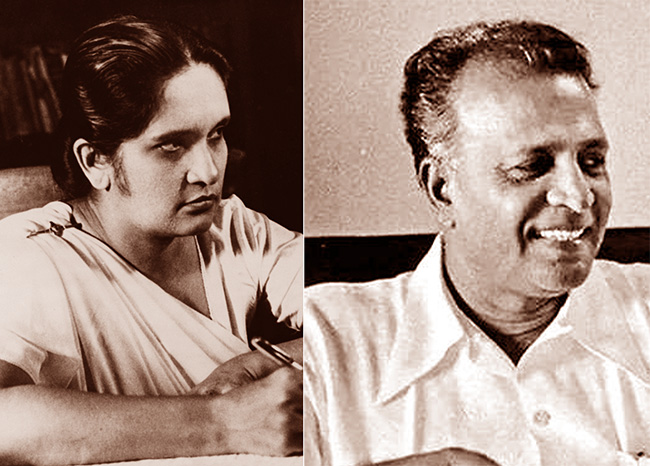
By Uditha Devapriya
On June 7, 1964, the Central Committee of the Lanka Sama Samaja Party convened a special conference at which three resolutions were presented. The first, moved by N. M. Perera, called for a coalition with the SLFP, inclusive of any ministerial portfolios. The second, led by the likes of Colvin R. de Silva, Leslie Goonewardena, and Bernard Soysa, advocated a line of critical support for the SLFP, but without entering into a coalition. The third, supported by the likes of Edmund Samarakkody and Bala Tampoe, rejected any form of compromise with the SLFP and argued that the LSSP should remain an independent party.
The conference was held a year after three parties – the LSSP, the Communist Party, and Philip Gunawardena’s Mahajana Eksath Peramuna – had founded a United Left Front. The ULF’s formation came in the wake of a spate of strikes against the Sirimavo Bandaranaike government. The previous year, the Ceylon Transport Board had waged a 17-day strike, and the harbour unions a 60-day strike. In 1963 a group of working-class organisations, calling itself the Joint Committee of Trade Unions, began mobilising itself. It soon came up with a common programme, and presented a list of 21 radical demands.
In response to these demands, Bandaranaike eventually supported a coalition arrangement with the left. In this she was opposed, not merely by the right-wing of her party, led by C. P. de Silva, but also those in left parties opposed to such an agreement, including Bala Tampoe and Edmund Samarakkody. Until then these parties had never seen the SLFP as a force to reckon with: Leslie Goonewardena, for instance, had characterised it as “a Centre Party with a programme of moderate reforms”, while Colvin R. de Silva had described it as “capitalist”, no different to the UNP and by default as bourgeois as the latter.
The LSSP’s decision to partner with the government had a great deal to do with its changing opinions about the SLFP. This, in turn, was influenced by developments abroad. In 1944, the Fourth International, which the LSSP had affiliated itself with in 1940 following its split with the Stalinist faction, appointed Michel Pablo as its International Secretary. After the end of the war, Pablo oversaw a shift in the Fourth International’s attitude to the Soviet states in Eastern Europe. More controversially, he began advocating a strategy of cooperation with mass organisations, regardless of their working-class or radical credentials.
Pablo argued that from an objective perspective, tensions between the US and the Soviet Union would lead to a “global civil war”, in which the Soviet Union would serve as a midwife for world socialist revolution. In such a situation the Fourth International would have to take sides. Here he advocated a strategy of entryism vis-à-vis Stalinist parties: since the conflict was between Stalinist and capitalist regimes, he reasoned, it made sense to see the former as allies. Such a strategy would, in his opinion, lead to “integration” into a mass movement, enabling the latter to rise to the level of a revolutionary movement.

Though controversial, Pablo’s line is best seen in the context of his times. The resurgence of capitalism after the war, and the boom in commodity prices, had a profound impact on the course of socialist politics in the Third World. The stunted nature of the bourgeoisie in these societies had forced left parties to look for alternatives. For a while, Trotsky had been their guide: in colonial and semi-colonial societies, he had noted, only the working class could be expected to see through a revolution. This entailed the establishment of workers’ states, but only those arising from a proletarian revolution: a proposition which, logically, excluded any compromise with non-radical “alternatives” to the bourgeoisie.
To be sure, the Pabloites did not waver in their support for workers’ states. However, they questioned whether such states could arise only from a proletarian revolution. For obvious reasons, their reasoning had great relevance for Trotskyite parties in the Third World. The LSSP’s response to them showed this well: while rejecting any alliance with Stalinist parties, the LSSP sympathised with the Pabloites’ advocacy of entryism, which involved a strategic orientation towards “reformist politics.” For the world’s oldest Trotskyite party, then going through a series of convulsions, ruptures, and splits, the prospect of entering the reformist path without abandoning its radical roots proved to be welcoming.
Writing in the left-wing journal Community in 1962, Hector Abhayavardhana noted some of the key concerns that the party had tried to resolve upon its formation. Abhayavardhana traced the LSSP’s origins to three developments: international communism, the freedom struggle in India, and local imperatives. The latter had dictated the LSSP’s manifesto in 1936, which included such demands as free school books and the use of Sinhala and Tamil in the law courts. Abhayavardhana suggested, correctly, that once these imperatives changed, so would the party’s focus, though within a revolutionary framework. These changes would be contingent on two important factors: the establishment of universal franchise in 1931, and the transfer of power to the local bourgeoisie in 1948.
Paradoxical as it may seem, the LSSP had entered the arena of radical politics through the ballot box. While leading the struggle outside parliament, it waged a struggle inside it also. This dual strategy collapsed when the colonial government proscribed the party and the D. S. Senanayake government disenfranchised plantation Tamils. Suffering two defeats in a row, the LSSP was forced to think of alternatives. That meant rethinking categories such as class, and grounding them in the concrete realities of the country.
This was more or less informed by the irrelevance of classical and orthodox Marxian analysis to the situation in Sri Lanka, specifically to its rural society: with a “vast amorphous mass of village inhabitants”, Abhayavardhana observed, there was no real basis in the country for a struggle “between rich owners and the rural poor.” To complicate matters further, reforms like the franchise and free education, which had aimed at the emancipation of the poor, had in fact driven them away from “revolutionary inclinations.” The result was the flowering of a powerful rural middle-class, which the LSSP, to its discomfort, found it could not mobilise as much as it had the urban workers and plantation Tamils.
Where else could the left turn to? The obvious answer was the rural peasantry. But the rural peasantry was in itself incapable of revolution, as Hector Abhayavardhana has noted only too clearly. While opposing the UNP’s Westernised veneer, it did not necessarily oppose the UNP’s overtures to Sinhalese nationalism. As historians like K. M. de Silva have observed, the leaders of the UNP did not see their Westernised ethos as an impediment to obtaining support from the rural masses. That, in part at least, was what motivated the Senanayake government to deprive Indian estate workers of their most fundamental rights, despite the existence of pro-minority legal safeguards in the Soulbury Constitution.
To say this is not to overlook the unique character of the Sri Lankan rural peasantry and petty bourgeoisie. Orthodox Marxists, not unjustifiably, characterise the latter as socially and politically conservative, tilting more often than not to the right. In Sri Lanka, this has frequently been the case: they voted for the UNP in 1948 and 1952, and voted en masse against the SLFP in 1977. Yet during these years they also tilted to the left, if not the centre-left: it was the petty bourgeoisie, after all, which rallied around the SLFP, and supported its more important reforms, such as the nationalisation of transport services.
One must, of course, be wary of pasting the radical tag on these measures and the classes that ostensibly stood for them. But if the Trotskyite critique of the bourgeoisie – that they were incapable of reform, even less revolution – holds valid, which it does, then the left in the former colonies of the Third World had no alternative but to look elsewhere and to be, as Abhayavardhana noted, “practical men” with regard to electoral politics. The limits within which they had to work in Sri Lanka meant that, in the face of changing dynamics, especially among the country’s middle-classes, they had to change their tactics too.
Meanwhile, in 1953, the Trotskyite critique of Pabloism culminated with the publication of an Open Letter by James Cannon, of the US Socialist Workers’ Party. Cannon criticised the Pabloite line, arguing that it advocated a policy of “complete submission.” The publication of the letter led to the withdrawal of the International Committee of the Fourth International from the International Secretariat. The latter, led by Pablo, continued to influence socialist parties in the Third World, advocating temporary alliances with petty bourgeois and centrist formations in the guise of opposing capitalist governments.
For the LSSP, this was a much-needed opening. Even as late as 1954, three years after S. W. R. D. Bandaranaike formed the SLFP, the LSSP continued to characterise the latter as the alternative bourgeois party in Ceylon. Yet this did not deter it from striking up no contest pacts with Bandaranaike at the 1956 election, a strategy that went back to November 1951, when the party requested the SLFP to hold a discussion about the possibility of eliminating contests in the following year’s elections. Though it extended critical support to the MEP government in 1956, the LSSP opposed the latter once it enacted emergency measures in 1957, mobilising trade union action for a period of three years.
At the 1960 election the LSSP contested separately, with the slogan “N. M. for P.M.” Though Sinhala nationalism no longer held sway as it had in 1956, the LSSP found itself reduced to a paltry 10 seats. It was against this backdrop that it began rethinking its strategy vis-à-vis the ruling party. At the throne speech in April 1960, Perera openly declared that his party would not stabilise the SLFP. But a month later, in May, he called a special conference, where he moved a resolution for a coalition with the party. As T. Perera has noted in his biography of Edmund Samarakkody, the response to the resolution unearthed two tendencies within the oppositionist camp: the “hardliners” who opposed any compromise with the SLFP, including Samarakkody, and the “waverers”, including Leslie Goonewardena.
These tendencies expressed themselves more clearly at the 1964 conference. While the first resolution by Perera called for a complete coalition, inclusive of Ministries, and the second rejected a coalition while extending critical support, the third rejected both tactics. The outcome of the conference showed which way these tendencies had blown since they first manifested four years earlier: Perera’s resolution obtained more than 500 votes, the second 75 votes, the third 25. What the anti-coalitionists saw as the “Great Betrayal” of the LSSP began here: in a volte-face from its earlier position, the LSSP now held the SLFP as a party of a radical petty bourgeoisie, capable of reform.
History has not been kind to the LSSP’s decision. From 1970 to 1977, a period of less than a decade, these strategies enabled it, as well as the Communist Party, to obtain a number of Ministries, as partners of a petty bourgeois establishment. This arrangement collapsed the moment the SLFP turned to the right and expelled the left from its ranks in 1975, in a move which culminated with the SLFP’s own dissolution two years later.
As the likes of Samarakkody and Meryl Fernando have noted, the SLFP needed the LSSP and Communist Party, rather than the other way around. In the face of mass protests and strikes in 1962, the SLFP had been on the verge of complete collapse. The anti-coalitionists in the LSSP, having established themselves as the LSSP-R, contended later on that the LSSP could have made use of this opportunity to topple the government.
Whether or not the LSSP could have done this, one can’t really tell. However, regardless of what the LSSP chose to do, it must be pointed out that these decades saw the formation of several regimes in the Third World which posed as alternatives to Stalinism and capitalism. Moreover, the LSSP’s decision enabled it to see through certain important reforms. These included Workers’ Councils. Critics of these measures can point out, as they have, that they could have been implemented by any other regime. But they weren’t. And therein lies the rub: for all its failings, and for a brief period at least, the LSSP-CP-SLFP coalition which won elections in 1970 saw through something of a revolution in the country.
The writer is an international relations analyst, researcher, and columnist based in Sri Lanka who can be reached at udakdev1@gmail.com
-
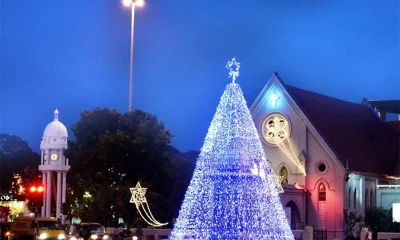
 Features6 days ago
Features6 days agoThe recovery has begun
-

 Business7 days ago
Business7 days agoSri Lanka budget deficit decreased by Rs. 487 bn in first 10 months of 2024
-

 News7 days ago
News7 days agoSita Ratwatte passes away
-
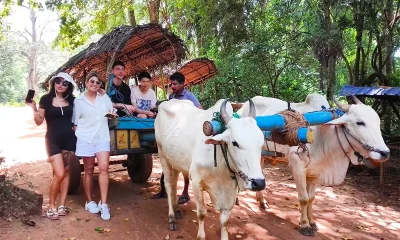
 Business7 days ago
Business7 days agoDigital marketing in high gear to increase tourist arrivals to Sri Lanka
-

 Editorial7 days ago
Editorial7 days agoFlashbacks to war
-
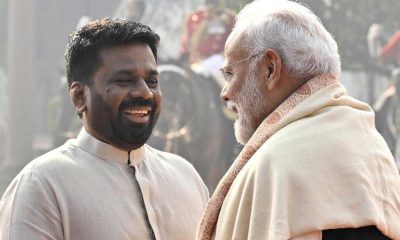
 Features5 days ago
Features5 days agoAKD faces challenging year ahead
-

 Editorial6 days ago
Editorial6 days agoBashing bureaucrats
-
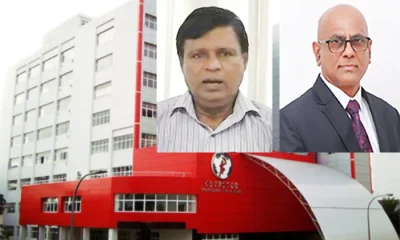
 News6 days ago
News6 days agoFM circular violated, Rs. 4 bn paid to CPC workers











